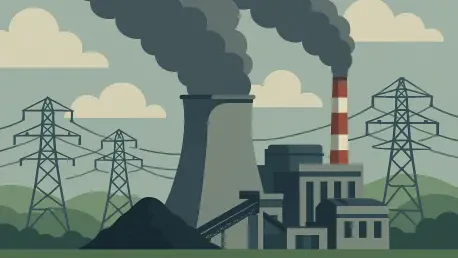In the heart of Michigan, a pivotal battle unfolds over the future of energy markets, as the U.S. Department of Energy (DOE) extends emergency orders to delay the retirement of Consumers Energy’s J.H. Campbell coal-fired power plant in West Olive. This 1,420-MW facility, originally set to close in May, now operates under federal mandate until November 19, 2025, spotlighting a stark tension between grid stability and environmental imperatives. This analysis examines the market dynamics at play within the Midcontinent Independent System Operator (MISO) region, exploring how such decisions impact energy costs, investment trends, and the transition to renewables. The purpose is to unpack the DOE’s rationale, assess financial and policy implications, and forecast future trajectories for stakeholders navigating this complex landscape. By delving into current data and emerging patterns, this piece aims to provide clarity on a decision that could redefine energy markets across multiple states.
Market Trends, Data Insights, and Future Projections
Current Dynamics: Grid Stability as a Market Driver
The energy market within MISO’s footprint, covering parts of 15 states, faces unprecedented pressure due to rising electricity demand from sectors like data centers and electric vehicles. The DOE’s emergency orders to keep the J.H. Campbell plant online stem from concerns over resource adequacy, with the facility generating 664,000 MWh in June at a 61% capacity factor. Frequent reliability alerts issued by MISO during peak summer months underscore the immediate need for baseload power to prevent blackouts. This trend of prioritizing existing fossil fuel infrastructure reflects a broader market caution, as rapid retirements of traditional generation sources outpace the integration of alternative capacities. For energy traders and utility planners, this signals a short-term reliance on coal to stabilize supply, even as long-term decarbonization goals loom large.
Financial Impacts: Cost Burdens Reshaping Market Behavior
A significant market shift emerges from the financial ramifications of sustaining coal operations under federal mandates. Consumers Energy incurred $29 million in costs over just 38 days under the initial DOE order, with the Federal Energy Regulatory Commission (FERC) ruling that these expenses will be distributed across MISO’s northern and central regions. Projections from recent industry reports suggest that if such delays in fossil fuel plant retirements persist, ratepayers could face cumulative costs of up to $5.9 billion by 2028. This cost-sharing model influences market behavior, as utilities may hesitate to retire aging assets without clear financial safeguards, while consumers brace for higher electricity rates. Investors, in turn, face uncertainty, weighing the risks of funding coal against the potential of more cost-effective renewable projects.
Policy Conflicts: A Barrier to Market Transformation
Policy discord between federal reliability mandates and state-level environmental targets creates a fragmented market environment. Opposition from environmental groups and Michigan’s regulatory bodies highlights resistance to federal overreach, arguing that no true emergency exists to justify continued coal use, especially as demand typically eases in fall months. Legal challenges underscore a market barrier, as conflicting priorities delay the shift toward cleaner energy sources. This tension affects market confidence, with renewable energy developers facing stalled projects while fossil fuel assets gain temporary reprieve. The lack of cohesive policy direction hampers long-term planning, leaving energy markets in MISO grappling with uncertainty over investment timelines and regulatory stability.
Future Outlook: Balancing Reliability with Renewable Growth
Looking ahead, energy markets in regions like MISO are poised for transformation, driven by technological advancements in wind, solar, and battery storage. Projections indicate that these alternatives could address resource adequacy concerns within the next few years, potentially reducing the need for emergency interventions by 2027. However, the current lag in grid modernization and capacity integration poses a risk of recurring federal orders to maintain fossil fuel plants. Market analysts anticipate that without accelerated investments in infrastructure, rising demand will continue to strain reliability, impacting energy prices and investment patterns. The trajectory suggests a dual market evolution—sustained coal reliance in the near term, contrasted by a gradual but inevitable pivot to renewables as scalability improves.
Strategic Reflections and Market Recommendations
Reflecting on the analysis, it becomes evident that the DOE’s decision to delay the J.H. Campbell plant retirement highlights deep-seated challenges in balancing immediate energy security with sustainable market evolution. The financial strain on ratepayers and the policy friction between federal and state entities underscore a critical juncture for energy markets. Moving forward, stakeholders should adapt by prioritizing strategic investments in grid modernization to curb reliance on emergency measures. Utilities can explore partnerships to fast-track renewable capacity, while policymakers might consider frameworks to align federal reliability goals with state environmental targets. Investors could shift focus toward hybrid solutions, blending short-term stability with long-term green initiatives, ensuring markets navigate this transition with resilience and foresight.









